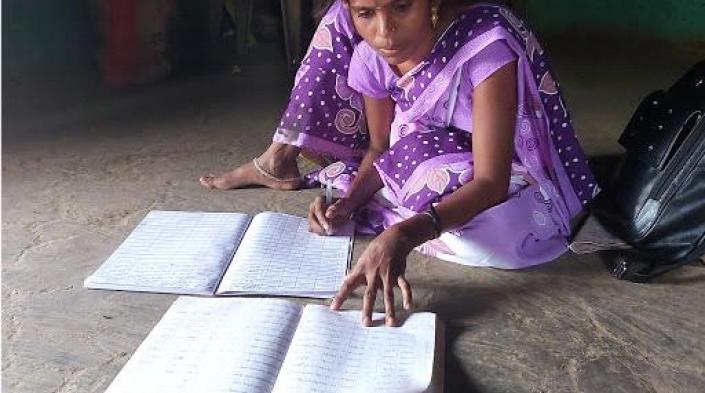
Publié le
Dernière mise à jour de cette page le
As part of the “Connecting the Unconnected: Supporting community networks and other community-based connectivity initiatives” project, 12 community network organisations (four in Africa, four in Asia and four in Latin America) were selected and granted funding towards activities that create and foster a peer learning community. Over the coming weeks we will be sharing stories from the members of this peer community about local impacts of the work they carried out with the help of this funding.
Today we present a story shared with us by Sarbani Banerjee Belur, a representative of the Gram Marg Rural Broadband project being implemented by two institutions, the Indian Institute of Technology (IIT) Bombay and BAIF Development Research Foundation. With the support of a Connecting the Connected learning grant, the project aimed to deploy an online and offline network in Pathardi village, India, and train the women in the community to bring about a digital ecosystem in the village. This story is a very special one, because it is a personal story shared by one woman in the village to describe the impact of the project on her own life and the rest of her community, especially other women.
Pink is often referred to as a feminine colour, a colour of being dainty. For me, pink is a colour that shows solidarity, a solidarity amongst women who are unable to use the internet due to various reasons. Internet, I have heard, is an enabler of many things. But women like myself and many others in Pathardi village have no access to the internet. I have seen the Wi-Fi signals being depicted in the colour blue. I want these signals to be depicted in pink and for more women to become enabled and empowered to use to the internet.
I am Anjali Vajre, a resident of Solepada in Pathardi. In the past five months, the connectivity enabled by BAIF and IIT Bombay through the APC-funded Gram Marg Rural Broadband project has changed my life and empowered me and I want to spread this to many more women. Through the project, I was chosen to be an “E-Dost”, facilitating banking services for the people in Pathardi and earning a livelihood from it. This is my story, an empowering story of myself.
I am a single parent and live in Pathardi village with my parents and my four-year-old son. I had always wanted to be independent and make use of my education, which is until 10th grade. But I got married at the age of 18 and went off to be with my husband in another village. A tragic turn of events saw me return back to my parents’ house in Pathardi. It was a difficult time for me, as I now had to take care of my old parents and my child. It was then that I thought, why not become a member of the Women's Self Help Group (SHG) in the village and work together with the other women. Slowly I began to feel the need to earn money to support my family due to the poor financial conditions in my house.
Pathardi is located in a valley, having a hilly terrain. The nearest mobile tower to Pathardi is 12 kilometres away in the city of Jawhar. Thus, mobile connectivity is very weak in Pathardi. However, we have some designated spots inside the village where the signal strength is strong. People in the village hover around such spots to receive and make phone calls. In an adjoining village, my friends climb up a hill in order to make phone calls. It is indeed tough for us.
Pathardi has been in urgent need of connectivity. We have been waiting for private telecom operators like Reliance Jio or Vodafone to come and enable the connectivity, but as we are poor, there is no incentive for these telecom operators to reach us in Pathardi. We have a non-functional BSNL tower which is 30 metres high in the vicinity of the village. This tower used to serve us with mobile connectivity a few years ago. For the past four years, Pathardi has had no connectivity.
Though unconnected, we are very greatly dependent on connectivity. We have no banks, no ATMs and we are unable to avail of the e-governance services offered by the government. We need to travel 12 kilometres to the city of Jawhar to avail of banking and e-governance services. Monthly, on average we travel five times to Jawhar for such activities. We spend approximately INR 100 to INR 120 (USD 1.30 to USD 1.60) for each visit. But we also lose our daily wage for that day and have housework piling up at home when we visit Jawhar.
We are not in need of mobile connectivity as we know we will be unable to pay for it religiously every month. We also feel that mobile signals trickle down and we get can connect to them when we are in certain spots in the village. Our need for internet connectivity is twofold. Firstly, we need connectivity to avail the banking facilities and e-governance services in the village itself. Many a time we have travelled to the city for withdrawing money from the bank but the bank is closed or there is no money in the ATM. In such cases, we need to wait for almost the entire day. This, according to me, is wastage of time. We feel that if we can avail of the banking facilities in the village, then we can save a lot of money and this money can be used for other things in the household. The second need of connectivity is our need to earn money from the connectivity. We are poor, illiterate and have no digital skills. We are keen to learn new learn things and earn money from being online.
The APC-funded Gram Marg/IIT Bombay and BAIF project has made a big contribution to the present connectivity in our village. We discussed the need for connectivity in community meetings and interactions before it was enabled for us. It was tailor-made and customised for our needs and requirements. Hence, it is easier for us to accept it within our community. The mix of online and offline has made it even more meaningful. We can use it both online and offline for our convenience and it has begun to impact our lives.
I have been nominated as the banking correspondent for Pathardi village. My typical day begins with me visiting the community support centre in Pathardi hamlet. I get online with the help of the SIM card-based cellular router. People visit the support centre for banking-related services, paying electricity bills and mobile recharges. I use an AePS (Aadhaar Enabled Payment System) biometric machine for fingerprint authentication. This is linked to the person’s bank account. He/she then asks for a cash withdrawal or to check their bank balance. I charge a fixed commission for the amount of money withdrawn.
In the last five months, since I have been a banking correspondent, I have earned INR 8,654, which is around USD 122. My monthly income is approximately USD 50. The earnings may be small, but I am happy and feel proud. I am able to buy things for my son and contribute to the family. I also feel happy splurging on myself. I bought myself a new smartphone, sarees and dresses. I am a role model for various other women and young girls in the village. I support women self-help groups in their various activities in the village. I dream of diversifying my services as there is a need for these. I also save money and want to use my savings for providing other services to the people in Pathardi. At present, this is an alternative source of livelihood for me. However, I want to make it my primary source of income in the months to come.
This E-Dost model with a women-driven approach is a simple yet innovative approach in enabling and empowering women in remote rural villages to earn a livelihood by becoming digital catalysts in the village. This way the youth can be engaged and the colour pink can really become revolutionary in empowering women through connectivity. This model is easily replicable and scalable to other villages. The women-first approach in the E-Dost model is a true example of enabling meaningful and empowering connectivity.
Don't miss the rest of the stories!
Photo: Anjali maintaining her accounts in a register. Courtesy of Sarbani Banerjee Belur.


